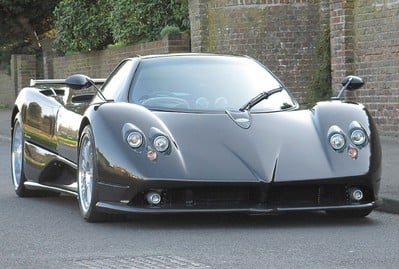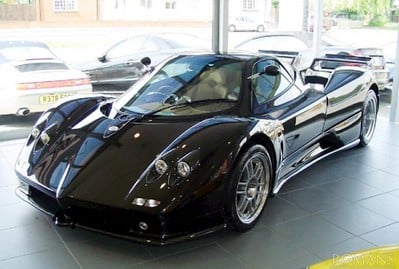Model Overview
Speed, power, head-turning looks, drama of the drive. All things attributed to some of the greatest vehicles in history. Vehicles that act as a culmination of years of research, development of technology and heavy investment. Pagani, in 1999, achieved all of the correct attributes with the Zonda, with hardly any of the apparent necessities thought to be required to create such a vehicle. A vehicle that has gone down in history as arguably one of the ultimate supercars, or even one of the world’s first “hypercars”.
Initially powered by a 6-litre V12 in very early models, and later gaining a 7-litre, followed finally by a 7.3-litre V12, all courtesy of Mercedes-AMG, the Zonda juxtaposed a new, exciting and potentially risky new hypercar with an engine supplied by one of the pillars of automotive history, and one with a fantastic reputation for reliability. The supply of engines by Mercedes remained unchanged throughout the Zonda’s lifespan and even continued through to its replacement - the Huayra. This was not to say that there weren’t multiple improvements and power increases to the engine with the introduction of different variants such as the Zonda S, Zonda F and Zonda R – a track only, notoriously brutal version of the Zonda.
From an aesthetic perspective – particularly at the time – the Zonda looked unlike anything else. Its aggressive lines, ultra-wide stance and incredibly low ground clearance gave, and still gives it an angry and performance-focused look that is rarely matched by other supercars. Clearly inspired by jet-fighters both inside and out, the way the bubble-like cockpit sits atop a sleek, angular body is absolute proof of this – not to mention all of the toggle switches, analogue dials and use of various metals on the interior – another clear nod toward aviation. The Roadster variants of the Zonda, including the Roadster itself and the Roadster F, introduced an open-top experience to a vehicle that was already an attack on the senses. The noise of the V12 flooding into the cabin, along with an analogue driving experience was revered worldwide by journalists and owners alike. Pagani claimed that no performance capability was lost with the introduction of a removable roof, along with the weight gain only amounting to roughly 30kg – a small price to pay for such an improvement to the drama of the Zonda.
Finalised by the Cinque and Tricolore variants, the Zonda is now one of the most collectible and highly demanded vehicles in the modern classic supercar market. Now fetching figures in the millions of pounds, dependant on the variant, it’s safe to say that Pagani have created something truly special with the Zonda. Something that is scarcely achieved, particularly by modern standards.





